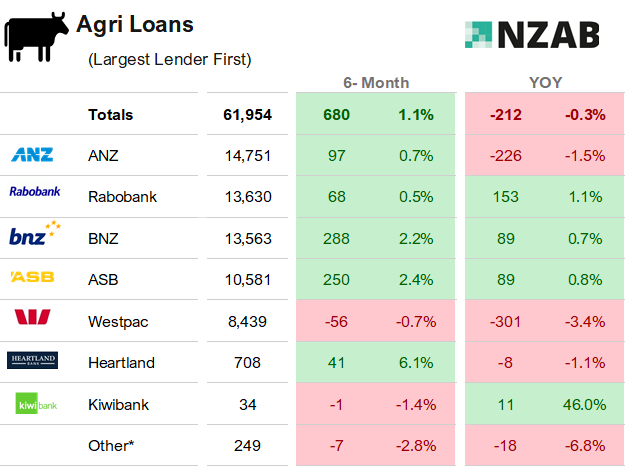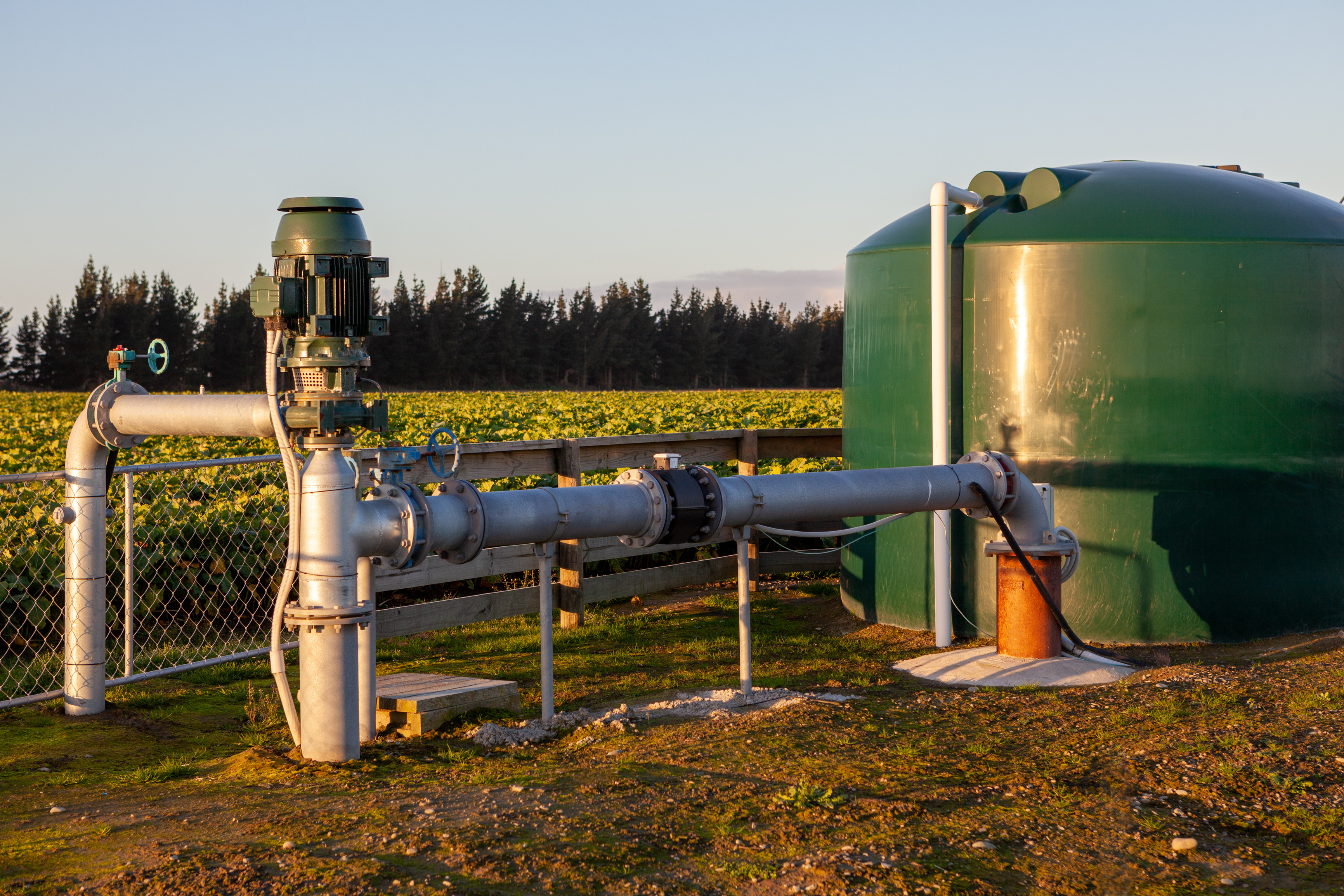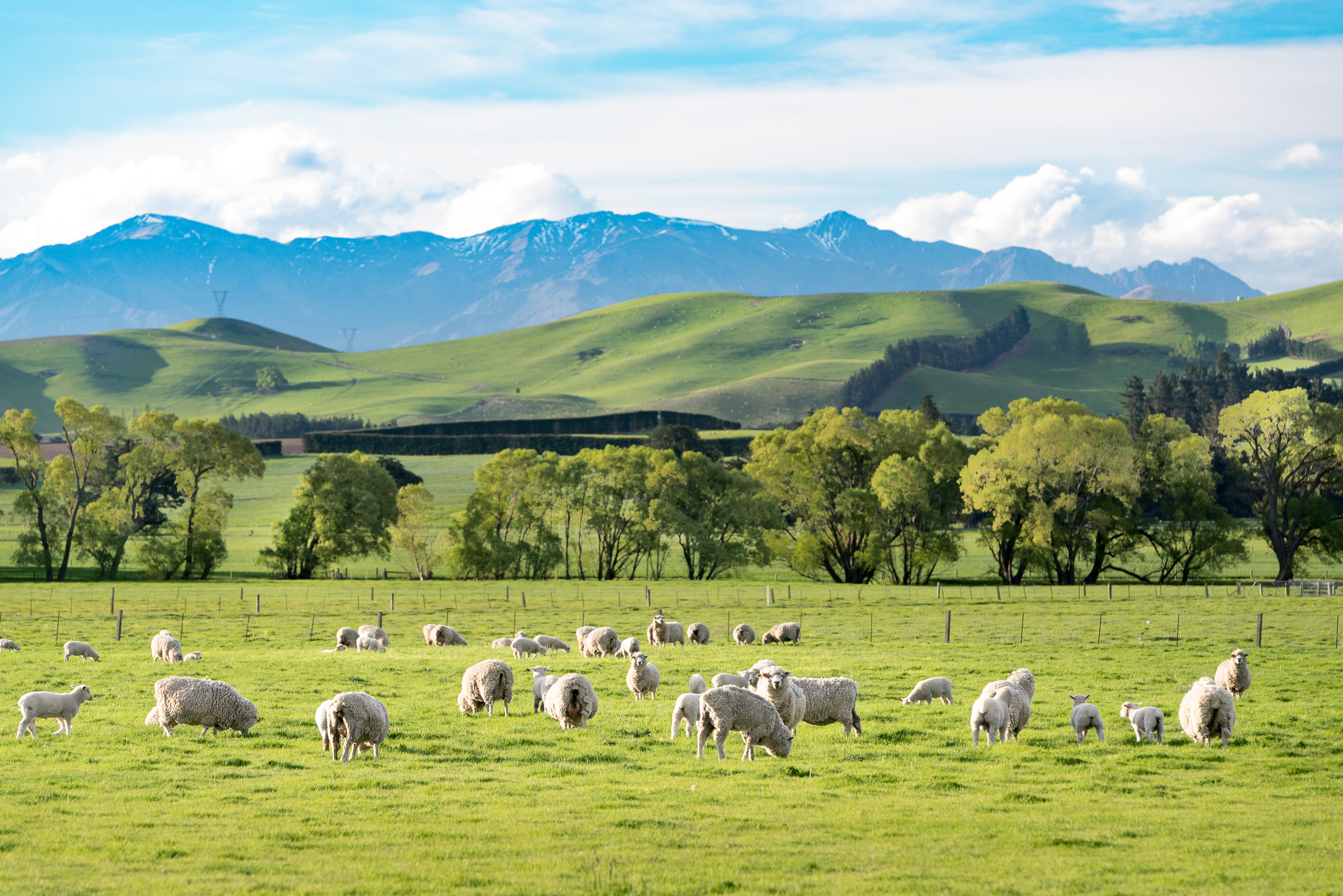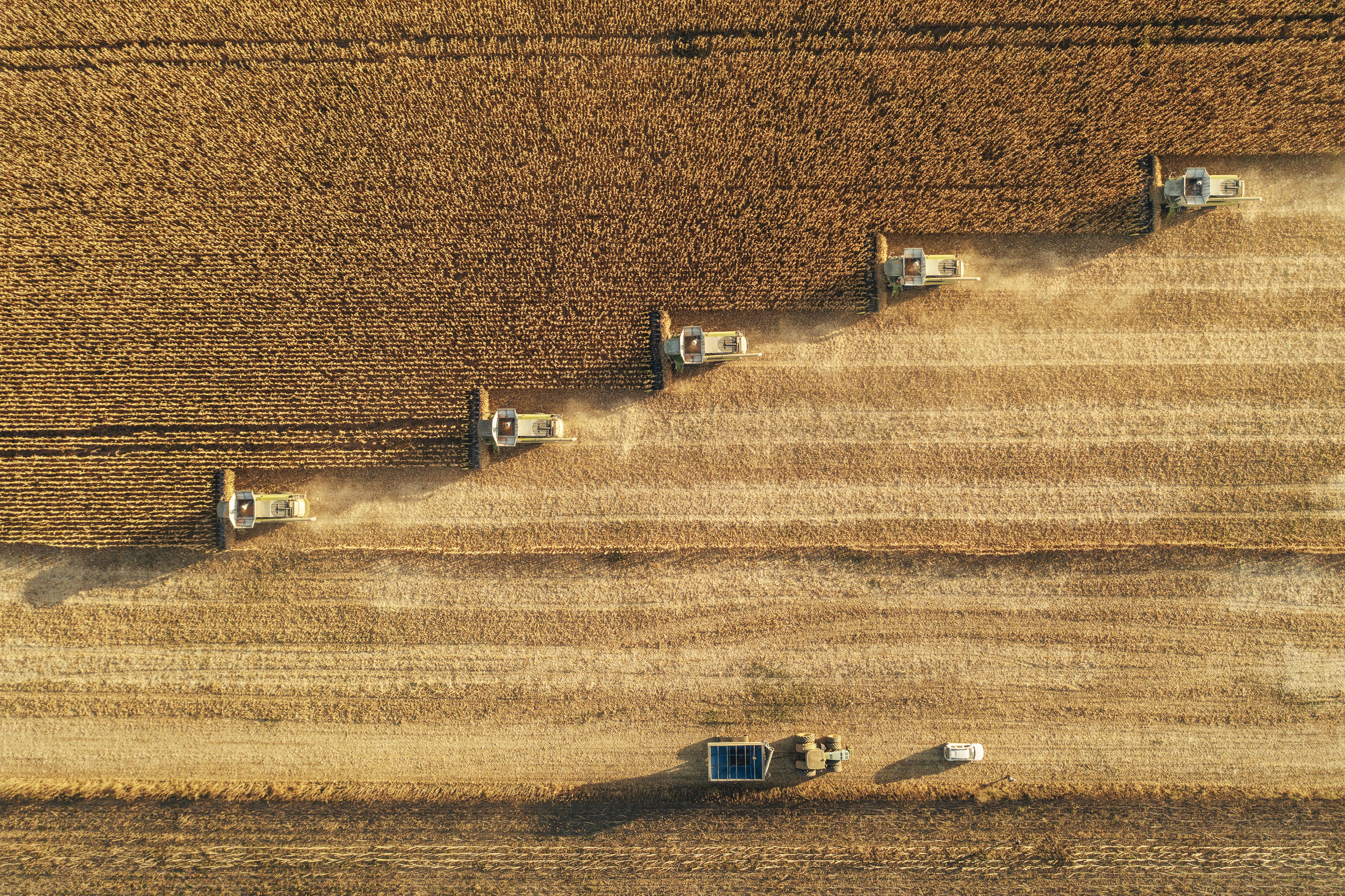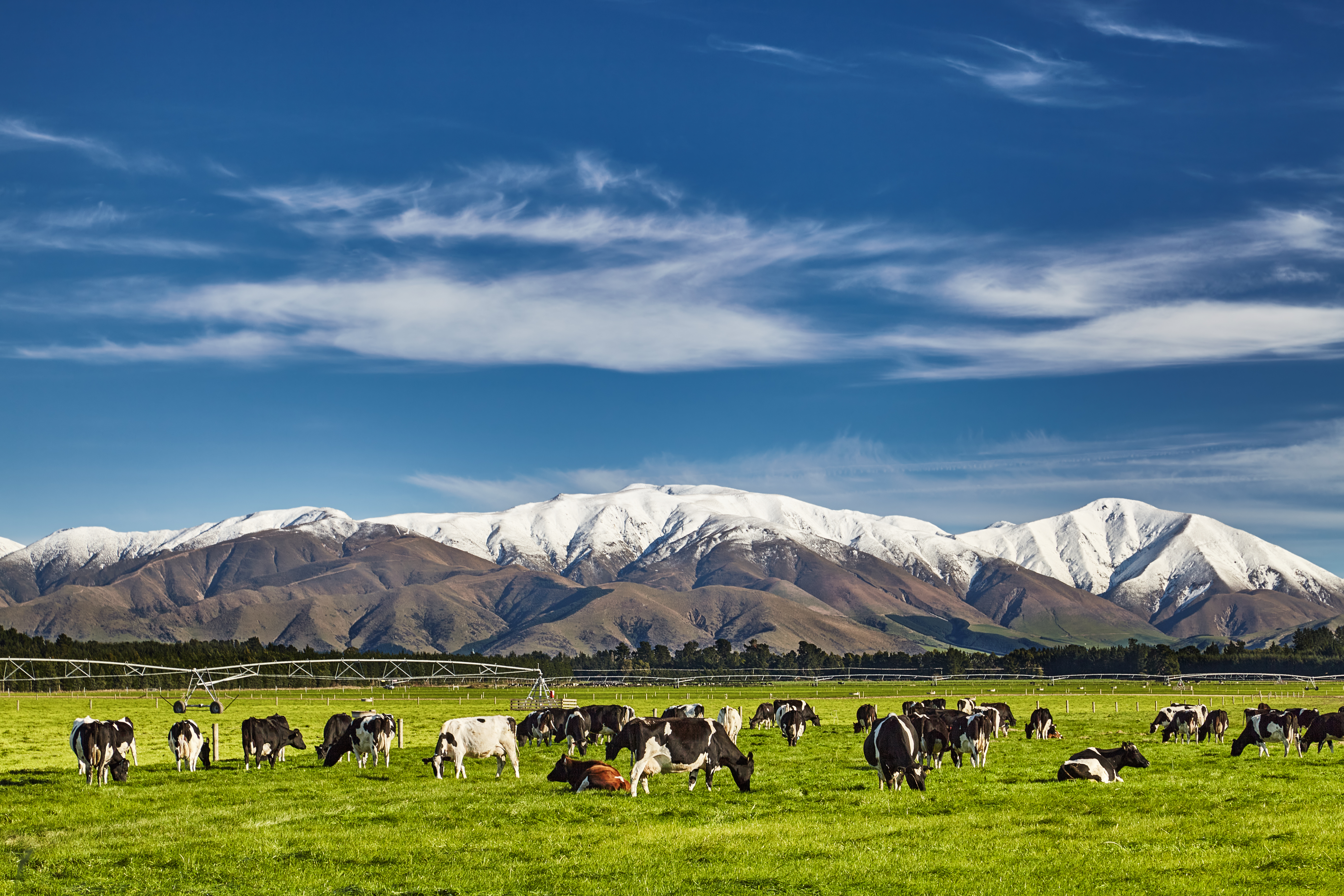Strengthening the Future of Agri Capital: NZAB Welcomes John Janssen
Dec 9, 2025 1:22:03 PM / by Scott Wishart posted in Debt, Action, Planning, Budget, Banking, Strategy
Exclusive Dairy & Agrifood Investment Opportunity - Expressions of Interest Open
Dec 1, 2025 5:11:17 PM / by Andrew Laming posted in Debt, Action, Planning, Budget, Banking, Strategy
We are excited to present an opportunity to invest in Good Guise Group - a vertically integrated Southland dairy farming and fresh-cheese manufacturing business producing premium paneer, queso fresco and emerging specialty cheeses.
This investment offers strong asset backing from a well run dairy unit with identified upside potential, alongside exposure to a growing business in one of the fastest-growing fresh-protein categories in Australasia.
The NZAB Banking Dashboard
Oct 31, 2025 12:22:28 PM / by Andrew Laming posted in Debt, Action, Planning, Budget, Banking, Strategy
Information only disclaimer. The information and commentary in this email are provided for general information purposes only. We recommend the recipients seek financial advice about their circumstances from their adviser before making any financial or investment decision or taking any action.
We’ve dived back into the RBNZ data to see all the main bank movements over the last six months (to 30 June 2025) - all the changes in lending, who’s winning market share and who’s losing it - in both the Agri and Business Lending Sectors.
This dashboard summarises lending trends across New Zealand’s registered banks to 30 June 2025, based on RBNZ data and NZAB’s market intelligence. It provides a comparative view of total, agri, and business credit movements, market share shifts, and provisioning patterns.
The 12-month period to June 2025 marked a stabilisation phase following two years of sharp monetary tightening. Aggregate bank lending grew by nearly 4% , but that growth was uneven across sectors and lenders. Housing continued to dominate system expansion, while agricultural credit remained flat and business lending advanced modestly.
For agriculture, a slight rebound in dairy and horticultural lending during the second half of the year masked a full-year contraction, reflecting both seasonal working-capital cycles and ongoing deleveraging on the back of strong sector performance. Meanwhile, Westpac and ANZ continued to retreat from agri exposure, with BNZ, ASB, and Rabobank filling the gap.
In business lending, Kiwibank and ASB were the most aggressive lenders, each gaining about half a percent in market share, reinforcing Kiwbank’s ongoing challenger moniker.
Overall, the data highlights a system still cautious on productive-sector credit despite improving farm profitability and moderating risk indicators. Provisioning levels across the agri portfolios declined, consistent with stronger commodity prices and stable repayment behaviour.
This report builds on NZAB’s prior dashboards and provides a factual base for ongoing commentary on capital allocation, bank behaviour, and funding conditions across New Zealand’s rural economy.
With this version, we've also included all of the respective banks' "group" exposures- additional lending that the banks complete in NZ directly from their parent entities.
As always, if you have any questions, or would like a full digital copy of the data, please email me directly.
Rewire the Capital System & Make Access to Capital a National Strategy
Oct 16, 2025 2:52:08 PM / by Andrew Laming posted in Debt, Action, Planning, Budget, Banking, Strategy
Information only disclaimer. The information and commentary in this email are provided for general information purposes only. We recommend the recipients seek financial advice about their circumstances from their adviser before making any financial or investment decision or taking any action.
A few weeks ago, I wrote an article called What Denmark Got Right, comparing how Denmark built an economic powerhouse on the back of their Agriculture industry (their clear strength) and what New Zealand could learn from it.
It generated a lot of positive feedback, clearly the topic struck a chord with many readers asking the same question: how do we actually make those ideas happen here?
This piece continues that conversation by focusing on the first two of the six shifts I outlined, rewiring the capital system and making access to capital a national strategic pillar.
Because until we fix how money flows, everything else we want to achieve in farming and agri-business will remain constrained.
Unlocking Growth: How Transitional Debt Capital Can Empower New Zealand Farming Businesses
Sep 24, 2025 8:52:03 AM / by Ray Fraser posted in Debt, Action, Planning, Budget, Banking, Strategy
Banks are narrowing, but options are widening. Learn how smart transitional finance is reshaping farming opportunities.
Information only disclaimer. The information and commentary in this email are provided for general information purposes only. We recommend the recipients seek financial advice about their circumstances from their adviser before making any financial or investment decision or taking any action.
Having spent most of my career in Rural Finance with a major New Zealand bank, I was firmly of the view the best way to fund a farming business was through a mix of bank debt and farmer equity. While I had some exposure to alternative capital sources, they were rarely used, typically reserved for distressed assets or situations where traditional funding wasn’t available.
Growing up on a farm, I always had a strong desire to own one myself. This goal sparked a deep interest in understanding the financial pathways to farm ownership and helping others do the same. Supporting farmers achieve their business and family goals became the most rewarding part of my banking career.
However, as bank regulations tightened and risk appetites narrowed, I became increasingly frustrated by the inability to support clients with strong growth plans that didn’t fit the bank’s criteria. Stepping away from banking five years ago gave me the opportunity to help farmers raise equity and explore new funding options. Since joining NZAB 18 months ago, I’ve focused on helping farmers access alternative capital, what we often refer to as transitional debt, to support growth and succession in ways traditional banking can’t always accommodate.
It’s worth noting that most of what NZAB does is still with the main banks. But increasingly, farmers are demanding other forms of capital that banks can’t or won’t provide under today’s regulatory settings.
This experience has opened my eyes to the value and opportunity that transitional capital brings to New Zealand agribusinesses.
What Is Transitional Debt Capital?
Transitional debt capital is short to medium-term funding designed to support farming businesses through periods of change, whether it’s expansion, succession, diversification, or recovery. It’s more flexible than traditional bank lending and can be tailored to suit the unique timing and cash flow of a farming operation. It’s important to note transitional capital is not necessarily about distressed situations, many farmers have strong growth plans that sit outside current bank appetite can and use these options successfully.
Why It’s Valuable in Today’s Banking Environment
Many farmers are finding that their businesses no longer fit within the increasingly narrow criteria of mainstream banks. In fact, many of these transactions are the type of lending that banks traditionally supported, but capital regulations now limit their ability. Whether it’s tighter debt servicing ratios, sector exposure limits, or strategic shifts, traditional lenders may not support the next phase of a farm’s journey, even when the strategy is sound.
Spring Has Sprung! Are You Bank Ready?
Sep 19, 2025 11:23:11 AM / by Jordain Beattie posted in Debt, Action, Planning, Budget, Banking, Strategy
Creating a strategic advantage in today's Rural Property market.
Information only disclaimer. The information and commentary in this email are provided for general information purposes only. We recommend the recipients seek financial advice about their circumstances from their adviser before making any financial or investment decision or taking any action.
In the agribusiness world, Spring is far more than just a change of season - it marks a period of opportunity in New Zealand’s Rural Property market. Decisions are made to expand operations, purchase new land or restructure business assets. Yet the difference between seizing an opportunity and missing out, often comes down to preparation.
Chatter around the traps suggests this Spring is set to be one of the hottest in recent times, with strong commodity prices, interest rates trending down, and a strong flow of capital into New Zealand agriculture.
‘Bank Ready’ = Market Ready
The ‘Bank Ready’ concept isn’t just about ticking boxes with your bank. It’s about positioning yourself to act with confidence and feel in control of the finance and property purchase process. Lenders are looking for a clear and a well thought out approach to finance application that aligns with your strategy.
We hear and talk about the concept of ‘Bank Ready’, but what does that mean?
I’ve broken this down into three key principles.
1. Knowing your business position gives you confidence to execute
'Bank Ready' farmers and growers who understand not only their financial position but also their risk profile, cashflow position and how it fits within their long-term strategy have the best chance of success in getting competitive debt capital the first time.
It’s not just about today’s balance sheet - it’s about knowing what could go wrong, what contingencies you have, and how you’d respond. Banks stress-test deals. The more context you give around “what if” scenarios, the more confidence they’ll have in your resilience.
Borrowing capacity is another critical factor. Don’t leave this in your bank’s hands; know exactly how they view your position and how much you can borrow. That knowledge gives you leverage, pre-approvals, and the confidence to execute quickly.
This is also the time to ensure you’ve got funding headroom. Expansion is exciting, but it’s vital to raise additional capital while you’re strong - not when the cycle turns. Going in “skinny” leaves no buffer for volatility.
2. Bank Alignment
When You Think It's Out of Reach
Sep 15, 2025 2:40:46 PM / by Lana Medder posted in Debt, Action, Planning, Budget, Banking, Strategy
Information only disclaimer. The information and commentary in this email are provided for general information purposes only. We recommend the recipients seek financial advice about their circumstances from their adviser before making any financial or investment decision or taking any action.
In farming, opportunities and challenges rarely come at the “perfect” time. A neighbouring block comes up for sale when your equity is stretched. Growth beckons, but the bank says no. Or, on the flip side, pressure mounts from a current lender and selling up feels inevitable.
At NZAB, we see these stories all the time. And while, on the surface, the situation might feel impossible - too far out of reach, too much pressure, not enough support - we’ve learned that with the right approach, there’s nearly always a pathway forward.
1. When Growth Seems Too Big to Grasp
The Banking Inquiry: What Farmers Need to Know
Aug 29, 2025 3:29:42 PM / by Andrew Laming & Scott Wishart posted in Debt, Action, Planning, Budget, Banking, Strategy
Information only disclaimer. The information and commentary in this email are provided for general information purposes only. We recommend the recipients seek financial advice about their circumstances from their adviser before making any financial or investment decision or taking any action.
The Finance and Expenditure Committee has now delivered its "Final Report on Banking Competition". It follows last year’s Commerce Commission market study into personal banking, but this time the net was cast wider — rural banking, business lending, and Māori access to capital were all explicitly included.
At NZAB, we’ve been deeply engaged in this process. We made a formal submission to the Committee, we wrote openly about why we thought the inquiry was asking the wrong questions, and we’ve published widely on the reality of farm lending margins in New Zealand. So when the report landed, we asked the obvious question: did it deliver?
The answer is a mixed one. There’s some progress — in fact, several of the recommendations mirror what we called for. But there are also gaps, missed opportunities, and the lingering sense that, once again, farmers may not see any real change. At the end of this article we also discuss the most important takeaway for farmers.
Backing First Farm Dreams
Aug 26, 2025 9:30:34 AM / by Chris Laming posted in Debt, Action, Planning, Budget, Banking, Strategy
NZAB's Role in Enabling the Next Generation of Farm Owners
Information only disclaimer. The information and commentary in this email are provided for general information purposes only. We recommend the recipients seek financial advice about their circumstances from their adviser before making any financial or investment decision or taking any action.
Helping hard working young kiwis purchase their first farm is one of the most meaningful and rewarding parts of our work. These transactions are never just about numbers, they’re about backing ambition, building trust, and crafting smart, sustainable pathways to ownership. Over the past 12 months, the NZAB Canterbury/Upper South Island team have had the privilege of advising on several successful first farm purchases, each with their own unique challenges and creative solutions. In my view there were three outcomes that were truly rewarding. I wanted to share these stories because I believe they show what is possible in a market that is perceived as impossible.
Why I Stepped Off the Sideline
Aug 13, 2025 10:41:12 AM / by David Gray posted in Debt, Action, Planning, Budget, Banking, Strategy
Information only disclaimer. The information and commentary in this email are provided for general information purposes only. We recommend the recipients seek financial advice about their circumstances from their adviser before making any financial or investment decision or taking any action.
For me, it has always been about value—creating it, delivering it, and living by it. The opportunity to be my best self and provide genuine value to my clients is what drives me professionally. I’ve long believed in being on the value side of the equation, where the focus is not just on transactions but on meaningful impact. This belief has shaped my approach to enable clients to grow and thrive.
However, delivering value isn’t always straightforward. During my time working at a bank, I found this especially challenging. Banks excel at their core function—lending money whilst minimising risk, but the process of putting a deal together often felt like a complex dance happening behind the scenes. By the time a deal reached the bank, the real work—the strategic thinking, the relationship-building, the breakthrough moments—had already happened. I was there, but only on the sidelines, watching the value unfold without being able to fully contribute to it.
This experience taught me that true value delivery requires more than just being present—it demands active involvement, commercial insight, and the freedom to help shape outcomes. It’s about being part of the solution, not just an observer once the heavy lifting is done. That’s why I’ve sought roles and environments where I can engage deeply with clients, understand their needs, and co-create solutions that make a real difference.
As bankers, we used to be able to roll up our sleeves and work alongside farmers—not just on the numbers, but on the strategy. We were close to the business, involved in the big decisions, and often played a quiet but critical role in helping farming families move forward. But over time, that changed. Compliance, regulation, and mounting internal workloads meant we had to step back. The job became more about managing risk than enabling progress. And as that gap grew, so did my desire to get back to the part of the work I truly loved—being a hands-on partner in the growth of great businesses.
Ultimately, value is not just a concept—it’s a commitment over time. It’s the promise to show up, to contribute meaningfully, and to do it time and time again. It’s the belief that when we bring our best selves to the table, we unlock the potential to create something truly impactful with the families that we work with.
I saw NZAB in action, and I knew I wanted to be part of it.
When looking for like-minded organisations, NZAB stood out. Value wasn’t just a concept—it was being delivered, consistently and tangibly. I saw alignment not only in philosophy but in action.
NZAB was out there, making a real difference for clients. Joining the team meant stepping into a space where meaningful impact is the norm, not the exception. It’s about being present with purpose, contributing fully, and being part of something that genuinely transforms client outcomes.



